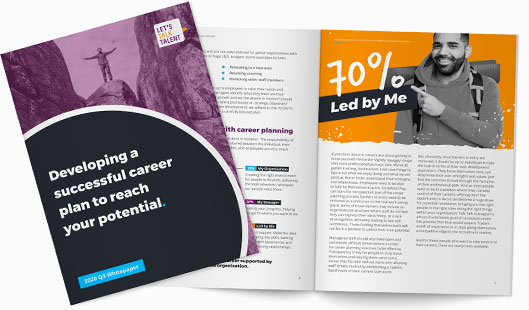Post COVD19: Themes in Careers & Trends
Last week we started our exploration of Career trends post-COVID19 and we took a look at Hired Immunity and what government intervention could mean for the future of careers.
This week we cover one of the biggest step changes we’ve seen in the world of work, the enforced remote working and virtual working implemented in a matter of weeks across many businesses.
Vlexible working
Arguably, this virus pandemic has enforced a level of virtual and flexible (vlexible) working that progressive HR practitioners could’ve only dreamed of barely two months ago. As organisation’s contingency planning measures and government mandates kicked-in, organisations across the globe had no choice but to grant their workforce the ability to work from home.
Teleconferencing provider Zoom has seen its user base go from 10 million to over 200 million since December 2019. This is more than mass app downloading. It’s behavioural change.
Even jobs that were deemed essential by authorities and therefore retained a rationale for its staff to attend a physical workplace were forced to consider flexible shift patterns and rota rotations.
For the most part, employees were not only allowed to work from home, they were afforded the technology and means to do so alongside the right to look after their children and flex their working days to do so.
And as many have seen their revenues slashed and their profits nose-dive, the new ways of working doesn’t seem to have effected productivity. On the contrary, it seems newer levels of flexibility and feelings of anxiety and uncertainty are throwing up new and varied challenges including overworking.
According to data collected by Slack (who has seen a jump of 12.5 million additional users since March 25), has shown how telecommuting has blurred the lines between the working day and the normal day.
In London, Paris and New York the number of communications being sent between the hours of 12 noon and 2pm and 2pm to 4pm have fallen sharply. However, there’s also been a sharp rise in communications sent around 9am and also between 6pm and 9pm. The issue of working from home all the time is that it’s harder to switch off from work.
With everyone so productive and probably accustomed to vlexible working, is the concept of a physical workplace dead?
We think not. Working in a physical space retains many benefits including collaboration, social interaction and learning. Many people claim they actually miss the office. However, large overheads such as physical workplaces now seem slightly less sensible overheads than previously accepted.
We see far more organisations transitioning to a vlexible arrangement that sees a larger % of organisations allowing employees to work from home and perhaps more practical use of physical space.
If the virus pandemic has taught organisations anything, it’s the importance of being able to retrench your business practices so work can be something you do from anywhere (if possible) as opposed to somewhere you go.
Next week, we will take a close look at the fortunes of the mission-led organisation during crisis times. The litmus test for employee value propositions (EVP).
If you need further help with your career planning during this post-pandemic phase. We have a wealth of resources for you including:
We extended our Coaching on Demand offering specifically during the COVID19 pandemic period to support several of our clients that requested coaching services for their people.
Our range of upcoming free HR webinars.
If you are worried about bringing your people back into your business post-pandemic, we’ve created a post-pandemic re-onboarding checklist to inspire and give you confidence you are providing the best possible experience for your staff.

